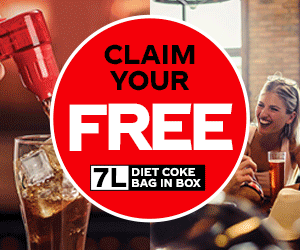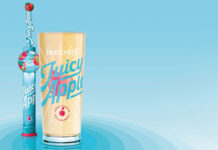

British beer drinkers’ tastes are continuing to diversify as consumers experiment with products from different regions and other countries.
And according to Molson Coors, whose brands include Singha, Cobra and Blue Moon, bottled beers are catering to this experimental streak.
Talking recently to SLTN, Alisdair Hamilton, the brewer’s on-trade sales director in Scotland, advised licensees to stock a broad range of bottled beers – and ensure there’s adequate fridge space to display them – to cater for broadening repertoires.
“What we’re seeing is a step away from the older favourites, the mainstays of the fridge, and people are trying more varied bottled beers, world beers, lagers and cask ales,” he said.
“I’d consider the space in the fridge as valuable as the space on the menu or the space on the bar.
“The fridge can sometimes be the forgotten area, so make sure that every beer in there fits an occasion type, a person type or an event type.
“For instance, if you have a curry deal on, make sure you have Cobra, if you’ve got young people who are high energy make sure you’ve got brands that they see as new, up and coming and exciting.”
While he acknowledged that draught beer will always play a vital role in the on-trade, Hamilton said bottled beers bring a number of advantages for publicans, including flexibility, strong profit margins and the possibility they could be more appealing to female drinkers.
Research carried out by the brewer found that the traditional pint glass is one of the main factors that dissuade women from drinking beer – an issue it aims to address with Animée, a range of bottled beers aimed specifically at women.
“With a packaged product you can talk about and contain the calorie content and the kind of things the female drinker may see as cues for what they want to buy,” Hamilton explained.
Coors’ view is shared by fellow brewer Heineken UK, which is convinced there is scope for licensees to grow sales of bottled beer among female consumers.
“In terms of attracting women drinkers, ‘female appeal’ is about making packaged lager a more appealing choice for female consumers on more occasions,” said trading director John Gemmell.
“Presentation is an important factor, hence premium lagers with a stylish image, such as Heineken, Kronenbourg 1664, Tiger and Sol, are appealing to women. The pint is traditionally seen as ‘male’ so a stylish bottled beer can come into its own when serving to women.
Bottled beer can help operators create a point of difference that will attract and retain customers.
“It is essential for licensees to stock a variety of packaged products to cater for every taste and trend.”
Gary Lawson, director of sales in Scotland for Branded Drinks, which distributes Furstenberg and Weihenstephan, said operators can establish a reputation for stocking new and unusual bottled beers.
“Point of difference seems to be the key with the specialist beer drinker dictating where he or she and their friends drink,” he said.
“A lot of bars are restricted with the product range available to them in terms of draught therefore their bottled offering becomes even more important in order to create that ‘point of difference’ which will attract and retain customers.
“It’s essential that all beers are presented with their own branded glassware with beer menus available, which include tasting notes.”
Graham Archibald, senior account manager at Morgenrot, which distributes Cruzcampo, Quilmes and Alhambra, also highlighted the importance of presentation when it comes to bottled beer.
“The serve is vital, especially for world beer brands, and if this isn’t done right consumers won’t be happy, especially after having to pay a premium,” he said.
“It’s about creating theatre and educating the consumer and we regularly visit and reward pubs that take the serve seriously to ensure that our brands are presented and served in the appropriate way.”
Lucy Jordan, director of customer marketing at MGD distributor Miller Brands, said it’s important to give consumers a genuine choice instead of stocking a range of brands that play similar roles.
“We suggest that you try to offer brands from as many different groupings as relevant,” she said.
“Some consumers are more experimental than others and like to see some different, unusual and interesting brands in a range.
“However, all consumers are keen to have a couple of well-known brands to act as a ‘safety net’.”

























